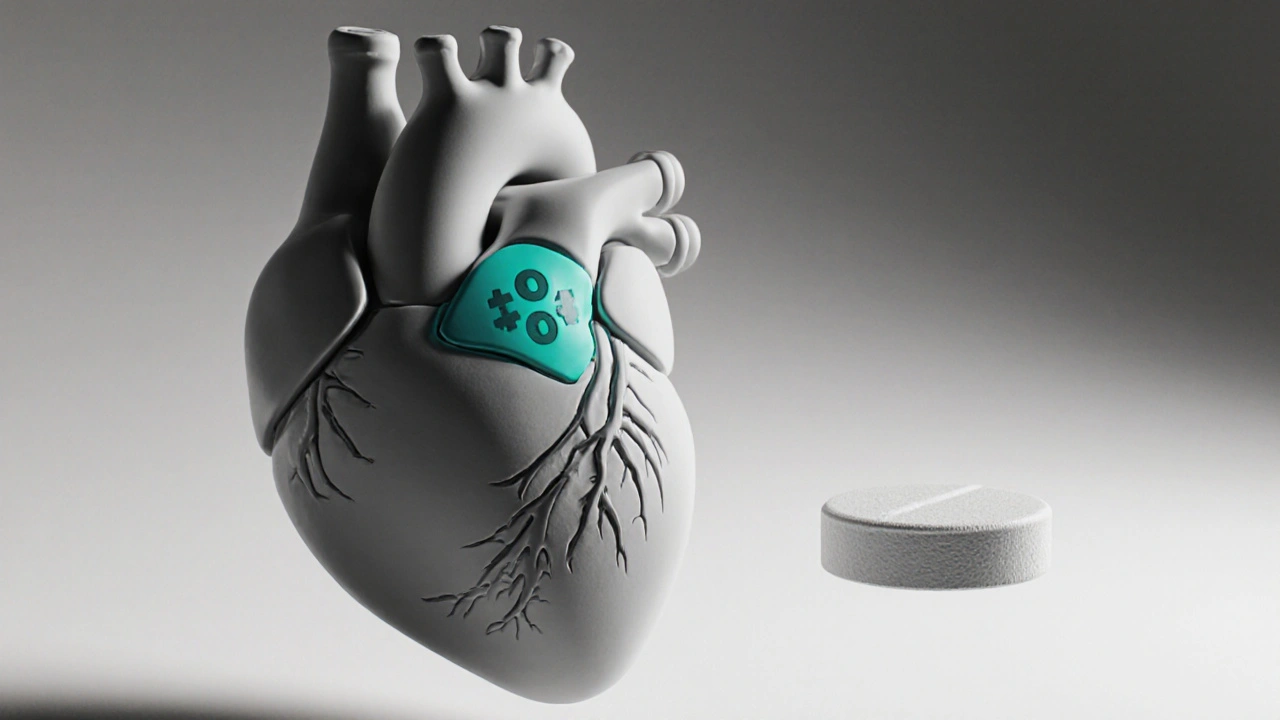Learn how bisoprolol fumarate improves outcomes for congestive heart failure patients, its dosing, side effects, and how it stacks up against other beta‑blockers.
Read MoreHeart Failure Guidelines – Latest Recommendations
When navigating heart failure guidelines, the evidence‑based recommendations that clinicians use to manage patients with heart failure. Also known as HF guidelines, they set the standard for drug choices, lifestyle advice, and follow‑up plans.
One medication that often appears in heart failure guidelines is eplerenone, a potassium‑sparing diuretic that reduces mortality in patients with reduced ejection fraction. It works by blocking aldosterone, lowering fluid buildup, and improving cardiac remodeling. Understanding its dosage and side‑effects is crucial for safe use.
Another factor that heart failure guidelines address is smoking, the leading preventable risk factor that worsens heart failure outcomes. Smoking accelerates vascular damage, raises blood pressure, and can diminish the efficacy of drugs like eplerenone. Quitting is a core recommendation across all guideline updates.
Managing hypertension, high blood pressure that often co‑exists with heart failure and drives disease progression is another pillar of the guidelines. Controlling blood pressure with ACE inhibitors or ARBs helps to reduce the heart’s workload and prevent further deterioration.
Core Medication Classes Recommended
The guidelines group drugs into four main classes: ACE inhibitors or ARBs, beta‑blockers, mineral‑ocorticoid receptor antagonists (like eplerenone), and SGLT2 inhibitors. Each class targets a different pathophysiologic pathway, from reducing afterload to improving renal glucose handling. Combining these agents, when tolerated, has been shown to cut hospital readmissions and extend survival.
Lifestyle modifications sit alongside pharmacotherapy. Sodium restriction (usually <1500 mg per day), fluid limits, and a heart‑healthy diet rich in fruits, vegetables, and lean protein are repeatedly emphasized. Regular, moderate‑intensity exercise—under medical supervision—improves functional capacity and quality of life without overtaxing the failing heart.
Monitoring is built into every guideline update. Clinicians track ejection fraction via echocardiography, measure natriuretic peptides such as NT‑proBNP, and assess renal function and electrolytes at each visit. These metrics guide dose adjustments and signal when advanced therapies may be needed.
Risk stratification determines eligibility for device therapy. Patients with an ejection fraction ≤35 % despite optimal medical therapy may receive an implantable cardioverter‑defibrillator (ICD) to prevent sudden death. Cardiac resynchronization therapy (CRT) is recommended for those with widened QRS complexes and symptomatic heart failure, offering improved pumping efficiency.
All of these components—drug selection, lifestyle advice, routine monitoring, and device considerations—interlock to form a comprehensive care plan. Below you’ll find a curated collection of articles that dive deeper into each topic, from eplerenone‑smoking interactions to practical tips for managing hypertension in heart failure patients. Explore the posts to get actionable insights you can apply right away.
